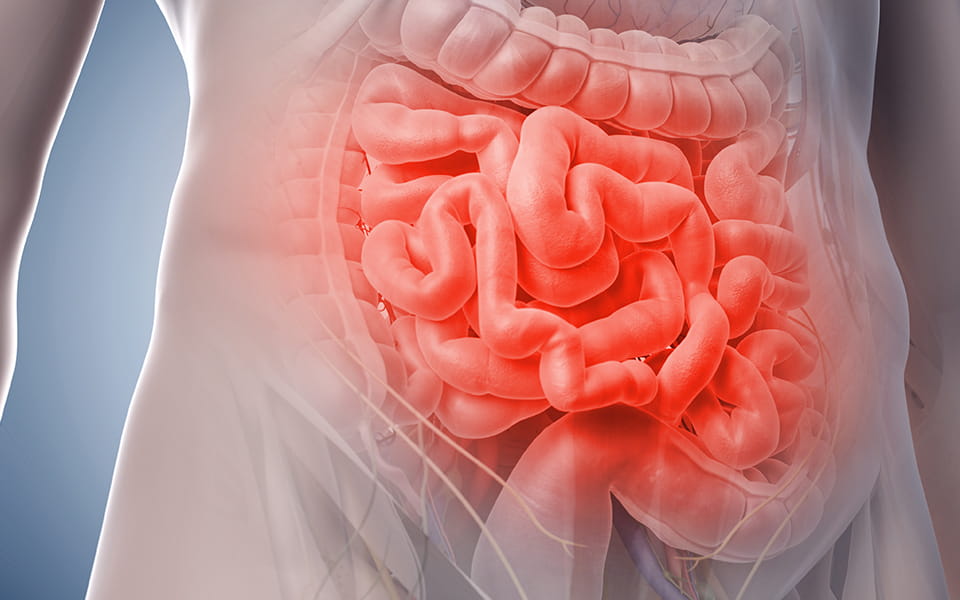Research Uncovers a Missing Link in Crohn’s Disease Treatment
June 01, 2018

Crohn’s disease is a type of chronic inflammatory bowel disease (IBD). It can affect any part of the GI tract from the mouth to the anus, but is most commonly found at the end of the small intestine where it joins the beginning of the large intestine or colon. It can also affect the eyes, skin and joints. Inflammatory bowel disease (IBD), which includes Crohn’s disease and ulcerative colitis, affects more than 1.6 million American men and women.
The inflammation that characterizes Crohn’s disease is thought to be an inappropriate immune response that leads to redness, swelling and pain. Inflammation from Crohn’s may appear in patches and may extend through the entire thickness of the intestinal wall. The primary symptoms are diarrhea, bloody stool and fatigue which can lead to physical complications such as dehydration, malnutrition and weight loss. The unpredictable and often sudden onset of the symptoms can lead to psychological conditions such as anxiety, depression and social isolation. Although symptoms can usually be managed, there is currently no cure for Crohn’s disease.
However, a current research project at University Hospitals may provide new hope.
A study led by Mahmoud Ghannoum, PhD, MBA, FAAM, of the Center for Medical Mycology, Department of Dermatology, Case Western Reserve University and University Hospitals, is looking at the role played by fungi in the development and aggravation of Crohn’s disease.
“Past research has allowed us to identify the multitude of organisms that inhabit the GI tract – some beneficial and others potentially harmful,” Dr. Ghannoum says. “We know that certain types of bacteria contribute to the development of Crohn’s disease but, until now, researchers have overlooked another key player – fungus.
“To address this issue, we began a focused effort to study the fungal community in the GI tract and how it may interact with bacteria to exacerbate the inflammatory symptoms in Crohn’s disease.”
The study looked at individuals in families where some members had Crohn’s and others didn’t. Researchers analyzed the combinations of intestinal bacteria and fungi found in the healthy subjects and in those with Crohn’s and compared the two. Their findings confirmed that the participants with Crohn’s had an imbalance in the fungal and bacterial mix in their gut. Specifically, they tended to have much higher levels of certain fungi compared to their healthy family members.
This had led scientists to believe that fungus plays a key role in chronic intestinal inflammation such as that found in Crohn’s disease.
This new insight may lead to the development of novel treatment approaches and diagnostic tests for Crohn’s disease and other debilitating digestive issues. Potentially, treatments could include combinations of antifungal medications and probiotics designed to balance both intestinal bacteria and fungi. The antifungals would control the overgrowth of fungi while the probiotics help to restore and maintain a healthy balance of the “good” bacteria in the gut.
“Our ground-breaking discovery that bacteria and fungi both play a critical role in health and disease has tremendous implications not only for understanding the disease process, but also for development of potentially life changing treatments for those who suffer from chronic digestive diseases,” Dr. Ghannoum says.
Related links
Learn more about inflammatory bowel disease
Read more about Crohn’s disease


